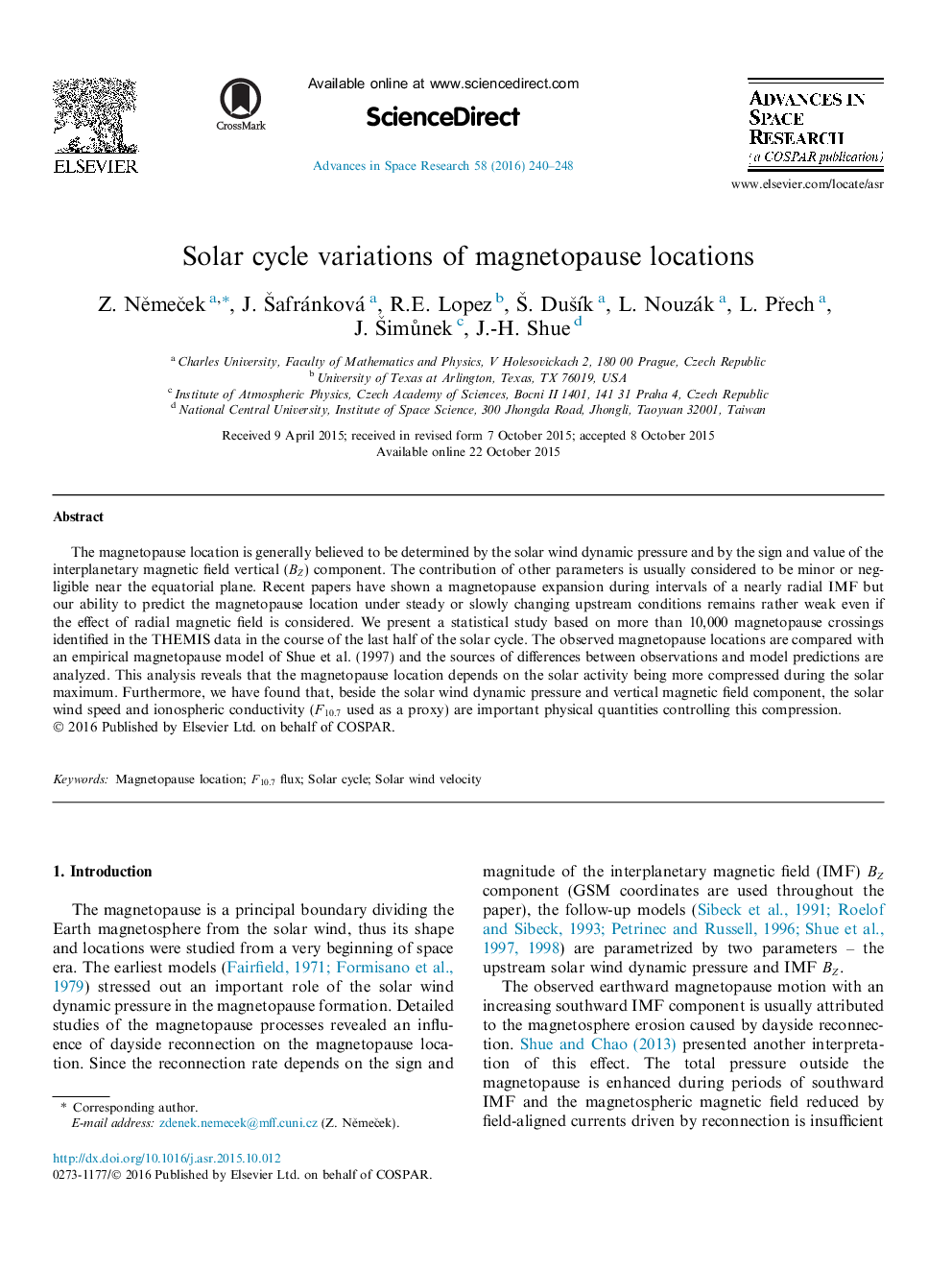| Article ID | Journal | Published Year | Pages | File Type |
|---|---|---|---|---|
| 1763308 | Advances in Space Research | 2016 | 9 Pages |
Abstract
The magnetopause location is generally believed to be determined by the solar wind dynamic pressure and by the sign and value of the interplanetary magnetic field vertical (BZ) component. The contribution of other parameters is usually considered to be minor or negligible near the equatorial plane. Recent papers have shown a magnetopause expansion during intervals of a nearly radial IMF but our ability to predict the magnetopause location under steady or slowly changing upstream conditions remains rather weak even if the effect of radial magnetic field is considered. We present a statistical study based on more than 10,000 magnetopause crossings identified in the THEMIS data in the course of the last half of the solar cycle. The observed magnetopause locations are compared with an empirical magnetopause model of Shue et al. (1997) and the sources of differences between observations and model predictions are analyzed. This analysis reveals that the magnetopause location depends on the solar activity being more compressed during the solar maximum. Furthermore, we have found that, beside the solar wind dynamic pressure and vertical magnetic field component, the solar wind speed and ionospheric conductivity (F10.7 used as a proxy) are important physical quantities controlling this compression.
Keywords
Related Topics
Physical Sciences and Engineering
Earth and Planetary Sciences
Space and Planetary Science
Authors
Z. NÄmeÄek, J. Å afránková, R.E. Lopez, Å . DuÅ¡Ãk, L. Nouzák, L. PÅech, J. Å imůnek, J.-H. Shue,
